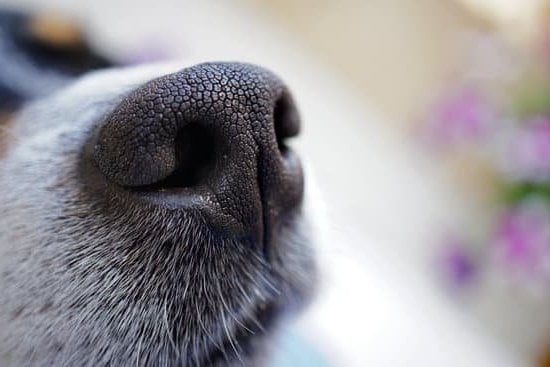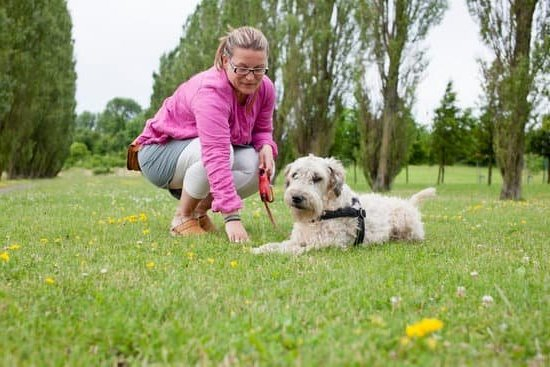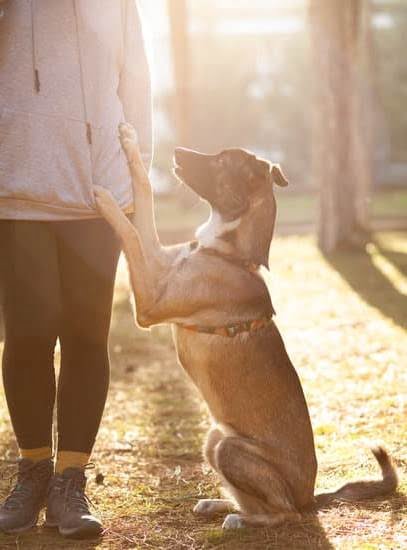How do K9 dogs get trained? K9 dogs, also known as police dogs or working dogs, play a crucial role in law enforcement and public safety. These highly trained canines are essential in detecting drugs, explosives, and tracking down suspects.
The process of training these canine officers involves various methods and techniques to ensure they perform their duties effectively. In this article, we will explore the different aspects of K9 dog training, from the basics of obedience to specialized skills in protection and aggression control.
K9 dogs are not your average household pet – they are specially trained to assist law enforcement agencies in a range of tasks that are crucial for maintaining public safety. Whether it’s conducting searches, apprehending suspects, or detecting illegal substances, these skilled canines are valuable assets to their human counterparts. As such, the importance of proper training cannot be overstated when it comes to preparing them for their duties in the field.
There is no one-size-fits-all approach to training K9 dogs. Different types of training methods are employed depending on the specific roles that the dogs will fulfill.
From basic obedience and command training to advanced detection and search techniques, each aspect plays a crucial part in shaping these exceptional animals into top-performing members of law enforcement teams. Throughout this article, we will delve into the intricacies of how these dedicated animals are trained to become invaluable allies on the front lines of public safety.
The Role of K9 Dogs in Law Enforcement
K9 dogs play a crucial role in law enforcement, assisting officers in various tasks such as search and rescue, narcotics detection, explosive detection, and apprehension of suspects. These highly trained dogs are valuable assets in ensuring public safety and aiding in criminal investigations. Their acute sense of smell and ability to traverse rough terrain make them an indispensable tool for police departments around the world.
In addition to their operational duties, K9 dogs also serve as a deterrent to criminal activities. The presence of these skilled canines often prevents potential offenders from carrying out illicit activities, resulting in safer communities. Moreover, K9 dogs are known for their swift response and unwavering loyalty to their handlers, making them an invaluable resource for law enforcement agencies in various situations.
The effectiveness of K9 units has been evidenced by numerous successful missions and operations where these dogs have played a critical role. From tracking down dangerous criminals to detecting illegal substances, K9 dogs have proven to be essential partners of law enforcement officers. As such, the proper training of these canines is imperative to ensure that they are well-prepared for the challenges they will face in the line of duty.
| K9 Dog Duties | Importance |
|---|---|
| Narcotics Detection | Prevent criminal activities |
| Explosive Detection | Aid in criminal investigations |
| Search and Rescue | Ensure public safety |
The Importance of Proper K9 Training
K9 dogs play a crucial role in law enforcement, performing various tasks such as detection, search and rescue, and protection. One of the key elements to their effectiveness is proper training. The importance of proper K9 training cannot be understated, as it ensures that these dogs are well-prepared to carry out their duties effectively and safely.
Proper training for K9 dogs not only enhances their ability to detect drugs or explosives, track suspects, or protect handlers, but it also helps to prevent potential harm to individuals involved in law enforcement operations. Through rigorous and methodical training, K9 dogs can develop the necessary skills and behaviors to perform their tasks with precision and discipline. This level of training not only benefits law enforcement agencies but also contributes to public safety.
In addition to enhancing the capabilities of K9 dogs in law enforcement operations, proper training also fosters a strong bond between the animals and their handlers. This bond is built on mutual trust, respect, and understanding, which is essential for effective teamwork in high-stress situations. The relationship between K9 handlers and their dogs is a vital aspect of successful law enforcement operations, making proper training an indispensable component in ensuring the effectiveness of K9 units.
Different Types of K9 Dog Training Methods
There are various methods used for training K9 dogs, each designed to suit the specific needs and requirements of law enforcement agencies. These methods ensure that K9 dogs are adequately trained to perform their duties effectively and contribute to public safety. Some of the different types of K9 dog training methods include:
- Positive Reinforcement: This method focuses on rewarding desired behaviors with treats, toys, or praise. It is based on the principle that rewarding a behavior increases the likelihood of it being repeated.
- Clicker Training: Clicker training involves using a clicker to mark the desired behavior followed by a reward. The clicker serves as a signal to the dog that it has performed the correct action.
- Compulsion Training: Also known as traditional or correction-based training, this method uses correctional tools such as choke chains or prong collars to discourage undesired behaviors.
Each of these methods has its own advantages and disadvantages, and the choice of method depends on factors such as the temperament of the dog, the specific tasks it needs to perform, and the preferences of the handlers.
It is important for law enforcement agencies to choose a training method that aligns with their goals for K9 deployment and ensures that the dogs receive humane treatment throughout their training. A well-planned and executed training program is essential in shaping K9 dogs into reliable partners for law enforcement officers in various operations.
Basic Training for K9 Dogs
Basic training for K9 dogs is essential in preparing them for their role in law enforcement. Obedience and following commands are the foundation of this training, as it sets the groundwork for more advanced skills. Through obedience training, K9 dogs learn to respond to verbal cues and hand signals from their handlers, ensuring that they can be controlled in various scenarios.
One key aspect of basic obedience training for K9 dogs is socialization. This involves exposing the dogs to different environments, people, and other animals to ensure they can remain calm and focused in any situation. Additionally, basic training focuses on teaching K9 dogs to walk properly on a leash, sit on command, stay when needed, and come when called. These fundamental skills are crucial for the success of the dog’s overall training.
It’s important to note that each K9 dog may require different methods of training based on their breed, temperament, and intended role in law enforcement. This means that trainers need to be adaptable and patient in their approach to ensure that each dog reaches its full potential. Ultimately, the success of basic obedience training lays the groundwork for more specialized training such as detection work or protection tasks.
| Training Method | Description |
|---|---|
| Obedience Training | Teaching dogs to follow basic commands such as sit, stay, come, and walking properly on a leash. |
| Socialization | Exposing dogs to different environments and experiences to ensure they remain calm and focused. |
| Adaptability | Adjusting training methods based on individual characteristics of each K9 dog. |
Advanced Training for K9 Dogs
When it comes to advanced training for K9 dogs, one of the most crucial roles they play in law enforcement is in detection and search operations. These highly skilled dogs are trained to use their keen sense of smell to locate illegal substances such as drugs, explosives, and firearms. In addition, they are also trained to track and locate missing persons or fugitives, making them invaluable assets in search and rescue missions.
The training for detection and search involves teaching the K9 dogs to recognize specific odors associated with the substances or individuals they are tasked to find. This training typically starts with imprinting the desired odor on the dog’s mind and rewarding them for successfully detecting the scent. As they progress in their training, K9 dogs undergo rigorous exercises and simulations to sharpen their abilities and problem-solving skills when faced with challenging search scenarios.
In addition to their olfactory capabilities, K9 dogs are also trained to work efficiently in various environments such as buildings, open areas, vehicles, and even bodies of water. Their agility and physical endurance are honed through regular exercises and drills to ensure that they can perform optimally in diverse search situations.
The advanced training received by these remarkable animals enables them to contribute significantly to public safety by assisting law enforcement agencies in locating contraband, apprehending suspects, and finding missing individuals.
Specialized Training for K9 Dogs
K9 dogs undergo specialized training to develop their skills in protection and aggression control. This type of training is essential for K9 units in law enforcement as it allows the dogs to effectively assist their handlers in challenging situations. Here are some key aspects of specialized training for K9 dogs:
- Target Identification: During this phase of training, K9 dogs learn to differentiate between threats and non-threats. They are taught to bark, lunge, or apprehend suspects when necessary, while also showing restraint in non-threatening situations.
- Aggression Control: K9 dogs are trained to respond to commands from their handlers and exhibit controlled aggression only when directed. This includes stopping an attack on command and diligently following the instructions of their handlers at all times.
- Scenario-Based Training: To prepare for real-life scenarios, K9 dogs undergo training exercises that simulate various situations they may encounter in the field. These can range from building searches to riot control, ensuring that the dogs are well-prepared for any challenges they may face.
Specialized training for protection and aggression control plays a crucial role in shaping the behavior and skills of K9 dogs. The successful completion of this training enables them to fulfill their responsibilities effectively while ensuring the safety of both their handlers and the public.
Training facilities specializing in K9 units provide the necessary resources and expertise required for proper specialized training. These facilities offer environments where K9 dogs can train under controlled conditions while receiving guidance from experienced trainers. The strong partnership between these facilities and law enforcement agencies helps ensure that K9 units are equipped with well-trained, capable dogs ready to serve their communities.
Training Facilities for K9 Dogs
Specialized Training Centers
There are specialized training centers dedicated to K9 dog training that offer comprehensive programs to ensure that these dogs are well-prepared for their duties. These centers are equipped with various training grounds, obstacles courses, scent detection areas, and simulated real-life scenarios to expose the dogs to different situations they may encounter in their line of work.
Professional Trainers
At these training facilities, experienced and certified trainers work with the K9 dogs on a daily basis. These trainers have a deep understanding of canine behavior and psychology, as well as expertise in specific areas of K9 training such as obedience, search and rescue, narcotics detection, explosives detection, and apprehension techniques.
On-Site Living Arrangements
Many training facilities also provide on-site living arrangements for both the K9 dogs and their handlers. This allows for continuous bonding between the two as well as around-the-clock supervision and care for the animals. Additionally, it creates an environment where handlers can better understand the needs and behaviors of their K9 partners while working together in high-stress situations.
The Bond Between K9 Handlers and Their Dogs
The relationship between a K9 handler and their dog is pivotal to the success of the team in carrying out law enforcement duties. This unique bond is built on trust, mutual respect, and effective communication, leading to an inseparable partnership in the field.
Training Together
K9 handlers and their dogs often undergo training together to strengthen their bond. During this training, they develop a deep understanding of each other’s behaviors, cues, and body language. This not only improves the effectiveness of the team but also ensures the safety of both the handler and the dog during high-risk operations.
The Importance of Trust
One of the key elements in the bond between K9 handlers and their dogs is trust. The dog must trust its handler to lead them safely through various environments and situations. In return, the handler must trust their dog’s instincts and abilities when it comes to detecting threats or suspects.
Benefits Beyond Work
The bond between a K9 handler and their dog extends beyond work-related tasks. Many handlers have described their K9 partner as more than just a colleague – they are also companions, providing comfort and support during stressful or challenging times. The strong emotional connection between them enhances not only their work performance but also their overall well-being.
Conclusion
In conclusion, the training of K9 dogs is essential for maintaining public safety and enhancing the effectiveness of law enforcement efforts. The role of K9 dogs in law enforcement cannot be understated, as they play a crucial part in detecting drugs, explosives, and search and rescue missions. Proper training is vital to ensure that these highly capable animals can perform their duties effectively and safely.
The varied types of training for K9 dogs, including basic obedience and advanced detection skills, highlight the versatility and intelligence of these animals. Each method of training serves a specific purpose in preparing K9 dogs for the demands of their work. Whether it’s tracking a suspect or locating contraband, a well-trained K9 dog can make a significant impact on public safety by assisting law enforcement agencies in their important tasks.
Lastly, the bond between K9 handlers and their dogs is an integral part of the success of K9 units. The trust and communication between them are built through rigorous training and constant practice, leading to a strong partnership that enhances the capabilities of both the canine and human members of the team. Overall, well-trained K9 dogs make a vital contribution to public safety through their specialized skills and unwavering dedication to their work.
Frequently Asked Questions
What Training Method Is Used to Train Police Dogs?
Police dogs are trained using the positive reinforcement training method, which involves rewarding the dog for performing desired behaviors. This can include using toys, treats, or verbal praise to encourage the dog to learn and obey commands.
It’s important for police dogs to have a strong bond with their handlers, as this relationship plays a crucial role in their effectiveness in law enforcement situations.
How Do I Train My Dog to Be a K9?
To train your dog to be a K9, it’s essential to start with basic obedience training such as sit, stay, and come. Building a strong foundation of obedience is crucial before moving on to more advanced training tasks.
It’s also important to expose the dog to various environments and socialize them with different people and animals. Once these basics are established, specific K9 training like scent detection or suspect apprehension can be introduced under the guidance of a professional trainer.
How Are K9 Dogs Trained to Find Drugs?
K9 dogs are trained to find drugs through scent detection training, where they learn how to recognize and alert their handlers to the presence of narcotics. This often involves familiarizing the dog with the specific odors of different drugs and teaching them how to indicate when they detect these scents.
The training process typically includes simulations and real-life scenarios to ensure that K9 dogs can effectively locate drugs in various environments such as buildings, vehicles, or open areas.

Welcome to the blog! I am a professional dog trainer and have been working with dogs for many years. In this blog, I will be discussing various topics related to dog training, including tips, tricks, and advice. I hope you find this information helpful and informative. Thanks for reading!





